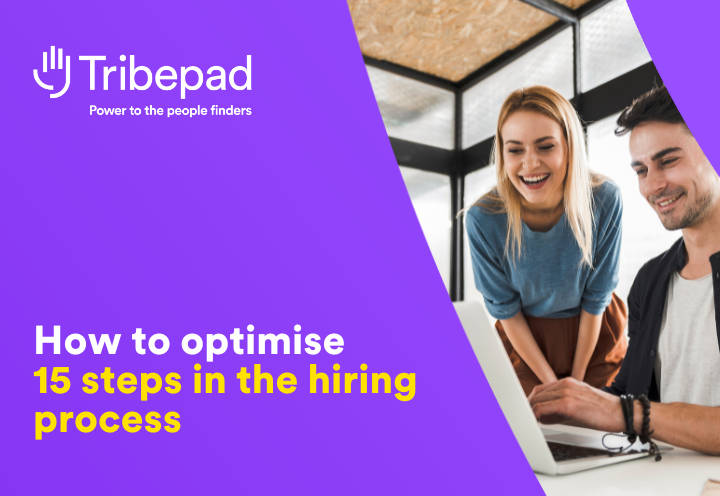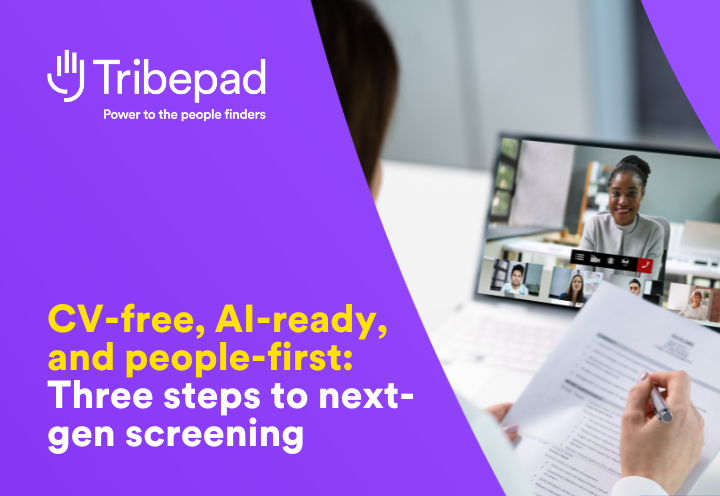Recruitment technology in the recruitment industry is advancing at quite a speed and there are some pretty exciting things just around the corner. Albeit exciting, the amount of tech available to recruiters can make choosing the right tech toolkit quite a daunting task. But fear not, we’re here with nine questions that you should ask yourself before diving into the cornerstone of recruitment tech: the Applicant Tracking System.
But first, what is an Applicant Tracking System?
An Applicant Tracking System (or ATS) is a recruitment management platform that helps recruiters to attract and engage with candidates as well as manage the entire recruitment process. Have a read about why you should be using an ATS, then we’ll crack on with the questions.
Question 1: Does recruitment technology help overcome your current challenges?
As with advancements in any industry, recruitment technology keeps getting better so that it can continue to help businesses overcome challenges. When you’re looking for an ATS, you first need to consider why you want one. Perhaps you’re just not attracting the right kind of candidates; the right ATS can significantly improve the quality of your hires. Are your recruitment teams spending way too much time sifting through applications to keep on top of everything? An easy-to-use ATS with a dashboard overview will help your recruiters prioritise their workload and use their time effectively. If your main challenge is low candidate engagement, there’s no point in investing in recruitment technology that doesn’t support engagement features such as video interviewing.
Question 2: Does it specialise in one area or cover everything?
Some Applicant Tracking Systems focus on one area of recruitment, perhaps helping recruiters manage all job applications in one place. Some concentrate on one particular industry, perhaps it’s spot on for recruiting on-floor retail staff but not so much for white collar roles.
A specialised ATS isn’t necessarily a bad thing; if it does exactly what you need in the best way possible, then there’s no problem. You do, however, need to make sure that your business needs aren’t going to change. You need to be confident that, a year down the line, you’re not going to want a system that can manage every element of the recruitment process, not just application management. You need to know that, although you’re only recruiting on-floor retail staff right now, the direction of your business isn’t going to shift slightly.
If you’re feeling unsure about any of those things, maybe the way to go is an Applicant Tracking System that covers everything. An ATS that can be adapted to fit your business needs at the time, but has the flexibility to change with your business.
Question 3: Is there room for development?
We’re all aware of the rate at which technology is advancing. Not 20 years ago a smartphone was only for the rich and famous, and now we’re on the brink of contact lenses that communicate with our phones; a new take on wearable tech. So, the last thing you want is a stagnant ATS that isn’t keeping up with the rest of the technology world. Look for a recruitment technology partner that is committed to keeping their platform at the forefront of recruitment technology.
Question 4: Can it integrate into my current tech stack?
You could have invested in the best ATS in the world, but if it doesn’t integrate with your current systems and processes, you’re never going to get the best out of it. An ATS can help to automate your recruitment process and make life easier for your recruitment teams; being able to integrate it with your current tech stack is key.
Question 5: Is it cost effective?
We know that using an ATS can save you money, but you have to look at your return on investment. If you’re a small business that only hires one member of staff every couple of years, it may not be worth spending thousands each month on a platform that you only log in to every few months. But that’s not to say an ATS isn’t an effective tool for a smaller business; try looking at a platform that has a flexible pricing structure and is completely tailored to your recruitment needs. That way, it can still save you money in the long run.
Question 6: What support will you get?
Getting the hang of a new system can be quite difficult, especially when it’s going to impact almost every element of your job. With an ATS that covers every stage of your recruitment process, a bit of support can go a long way.
It’s not just about whether or not the ATS company offer training and support, it’s whether what they offer is right for your business. If you’re not new to using an ATS, you may not want three full days of training up front, you may just want ongoing support for any problems you might encounter. Find an ATS provider that will not only support and train your staff, but will tailor that help to your business needs.
Question 7: Who owns the data?
Wherever there is data, there is a data owner. If you’re outsourcing any kind of data management system (like using an external ATS provider), you need to be clear from the start who actually owns that data.
Spoiler: you want to own the data. When entering their details, it is your data compliance and terms that your candidates are agreeing to, not those of your ATS provider. Make sure the ATS you go with gives you full ownership and control of your data.
Question 8: Is it secure and reliable?
When you invest in an ATS, you’re putting a lot of trust in the technology. This system is home to all the contact details of all the candidates that have ever passed through, and can contain some pretty sensitive data. You need to know that this data is secure. When your job application process includes equal opportunities monitoring with questions about disability, health, religion, and sexual orientation, you don’t want anyone getting hold of that data.
Make sure that the ATS you choose is reliable and is committed to keeping your data as safe as possible.
Question 9: Is the candidate experience top notch and does it represent your brand in the best way?
Let’s take a step back from the ATS for a second. Making the whole process easier and more effective for your recruitment teams is important, but so is the candidate experience. In the eyes of your candidates, the ATS you use is representing your business and, in a lot of cases, is the first interaction they have with you as a potential employer. Before committing to an ATS, make sure that you’re happy with how it will represent your brand to the outside world.
Enter Tribepad.
Tribepad is an ATS with an incredible range of features that overcome any recruitment challenges you may be facing. We tailor our platform to our clients’ specific needs and work with businesses of all shapes and sizes. And we love tech, meaning that we like to keep our platform moving, adopting new technology to make our clients’ lives easier wherever we can and representing our clients in the best way.
Give us a call to let us tell you why we’re the right recruitment technology partner for you.




